
Note: 'outdoors' photos were taken for illustrative purposes only. Overnight camping and bivvying away from home is not yet on the agenda anywhere in the UK.
New this spring/summer, the NeoAir XLite promises "the gold standard in lightweight backpacking comfort", combining a minimal weight and packed size with a comfy night's sleep, and enough insulation for cold weather (if not extreme winter). Of course thanks to Coronavirus I've not been able to push its limits on rough ground, cold hills or overnight backpacking full stop, so this review is based on a few nights of garden camping, a couple of which got down to low single figure temperatures.
I hope I've trialled enough different mats over the years to be able to offer useful thoughts, without yet having slept on it anywhere more challenging than the back yard.
At £170 for the Regular size and £185 for the Regular Wide I've been using, this is not by any stretch a budget option, but it feels very well made. It's also worth noting that the ones sold in the UK are made in Ireland, which counts as local produce in global supply chain terms, and suggests that it'd have been made under decent EU empolyment standards / suffocating red tape (delete according to bias).
Warmth and comfort
Instead of filling it with down or synthetic insulation, Therm-a-Rest have used something called 'ThermaCapture technology' inside the mat to trap radiant heat, combined with a 'Triangular Core Matrix' construction that's said to minimise convective heat-loss. The idea is that this is lighter, less bulky and more durable than conventional insulation. This model is certainly lighter and more compact than some insulated mats I've used, but it's not necessarily as toasty as them, and the warmth/weight/pack size comparison is hard to make with certainty.
With an R-value of 4.2 (in accordance with the ASTM F3340-18 testing standard) the NeoAir XLite is certainly warm for its minimal weight, and way more than adequate for the spring and summer nights I've used it on to date. But it clearly doesn't compete for winter or alpine use with warmer alternatives like the NeoAir XTherm (5.7, 453g), or down-filled mats such as the Downmat HL Winter from Exped (R-value 7, 486g) or Mountain Equipment's Aerostat Down Mat 7.0 (R-value 5, 735g).
We hear a lot about R numbers at the moment, but in this case R is nothing more sinister than a measure of insulating performance, and serves as a quick (albeit rough) way to compare different models. Obtained in a lab test, this figure is a measure of how effectively something resists conductive heat flow: a bigger R-value means better thermal insulating properties. Until recently there was no industry standard test for mats, and it was unclear to end users exactly what the various rival brands were basing their R-value figures on. The new standard ASTM F3340 test might level the field a bit, though some brands have told us that even this isn't a substitute for real world comparison (for instance I'm pretty sure the ME Aerostat mat equals Exped's model for warmth, in actual use).
Shape and dimensions
With a tapered shape this mat saves weight down at the foot end witout sacrificing too much space in the body. Four sizes are available, Small (119x51cm), Regular (183x51cm), Large (196x64cm) and Regular Wide (183x64cm). At 183cm tall and fairly broad in build I went for Regular Wide, and was glad I had. Length is just sufficient for me, while there's comfortably room for my arms on the mat when lying on my back - not always the case with tapered mats in my experience. Having used a different NeoAir model in the narrower size, I know I'd find the 51cm width a bit tight. However a disadvantage of the extra width is of course that it'll be a squeeze alongside another fatty in a small 2-person tent.
A thicker mat tends to ride over the lumps and bumps, and at over 6cm deep the NeoAir XLite is good and thick, offering plenty of comfort on rougher ground. In lieu of proper hill use I tried it in a tussocky field, and with piles of books on the office floor, and it definitely has the luxury factor I tend to associate with quality inflatable mats. I prefer vertical baffles, which I find somehow seem to hold you more centred on the mat, but the horizontal baffles here aren't too pronounced and ridgey.

Weight and packed size
At 435g in size Regular Wide the NeoAir XLite seems pretty light for the size, thickness and warmth on offer. With the Regular Wide version you do pay quite a weight penalty since the standard Regular is quoted as 340g while the Small is said to be just 230g. I can't vouch for these weights, but clearly if you're looking to cut out the grams then these narrower models are well worth considering. For me I suspect the added weight of the wide version is mostly going to pay off in terms of a good night's sleep.
Even the Regular Wide packs down pretty small, and the stuff sack provided is more than large enough (better a bit of slack than a struggle to cram it in when packing).

Fabric
The 30D Nylon fabric feels tough enough to take a bit of scuffing or withstand the odd twig, but like all such mats it'd be vulnerable to sharp rocks, so you'll want to protect it with a groundsheet if bivvying in the open. For minor repairs in the field, a patching kit comes supplied.
My only real gripe with the NeoAir is that it is subject to what I've come to call the 'Therm-a-Rest rustle', a crisp packet crinkle that accompanies every move and turn you make in the night (a characteristic it shares with the NeoAir XTherm, which has the same internal structure). If you or your tent companion are light sleepers then this may be a bit obtrusive.
Inflating and deflating
Featuring the new WingLock valve, the NeoAir XLite is, say Therm-a-Rest, up to three times faster to inflate and deflate than mats with the brand's now familiar classic twist valve. With a wide, chunky twist mechanism that's big enough to be usable wearing gloves, and a locking/unlocking 'wing' feature that's intuitive to operate, I like the upgrade. It seems durable so far, and it's claimed to be easy to repair in the field too (I'll have to reserve judgement on that).
Despite the wider valve it takes me a dizzying 30 or so breaths to inflate the Reg/Wide mat (post-Covid lungs may not help) so I recommend using the pump bag that comes supplied - with the added benefit that your breath won't be introducing moisture to the innards of the mat. That said, Therm-a-Rest assure us that breathing directly into your mat won't harm it (not something you'd be able to say for a down-filled rival).
The separate pump sack is large, but light (at 58g), and can double as a stuff sack for keeping your clothes organised in the rucksack. It takes around 10-11 full bags to inflate the mat, with a little bit of breath power at the end for full inflation.
Summary
Thick and comfy, light-but-warm, and with a new valve that makes it faster than an old Therm-a-Rest to inflate and deflate, there's a lot to like about the NeoAir XLite. You can get warmer inflatable mats, and you might well find lighter ones, but the balance struck here would make it an excellent choice for 3-4 season backpacking and all-round mountain use outside the extremes of winter and altitude. Aside from the crinkly noise, the only obvious downside is the price; but though it's not cheap, it does feel well made, and in any case it's on a par with similar insulated models from other leading brands.
Therm-a-Rest say:
For a minimal pack size and maximum performance, our NeoAir XLite offers the gold standard in lightweight backpacking comfort. The unrivaled Triangular Core Matrix offers the best warmth-to-weight ratio of any air sleeping pad construction. The construction gives the 2.5 inch (6.4 cm) thick pad superior stability, boasting the most inches of weld for maximum camp comfort. The compact pad boasts a 4.2 value, allowing users to camp comfortably year-round. Available in several sizes, including a roomy regular wide, the XLite features the high-performance WingLock valve, allowing the pad to inflate three times faster thanks to a larger opening and one-way inflation. Like all Therm-a-Rest pads, the NeoAir XLite is made in market to ensure quality and minimize environmental impact. The pad includes a breath-saving pump sack, compact stuff sack and field repair kit.
- Small: length 119cm width 51cm
- Regular: length 183cm width 51cm
- Large: length 196cm width 64cm
- Regular wide: length 183cm width 64cm
- Thickness: 6.4cm
- Weight: 430g Regular Wide
- R-value: 4.2
- Fabric: 30D rip HT Nylon
- What's Included: Pump sack, stuff sack and repair kit
For more info see thermarest.com



















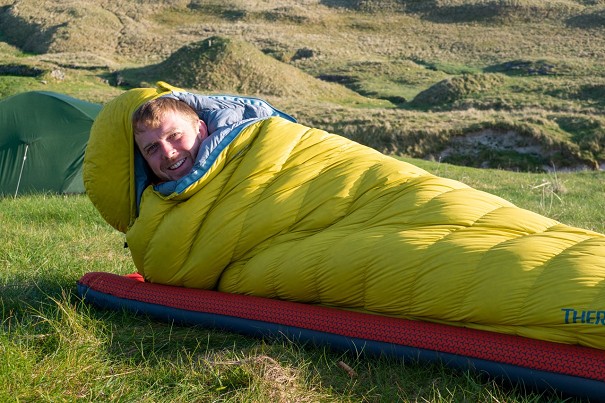
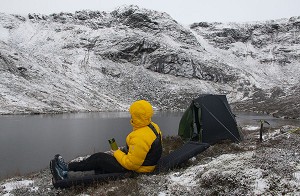
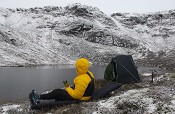
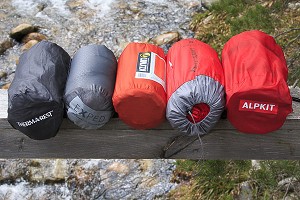
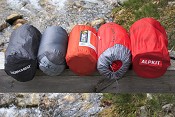
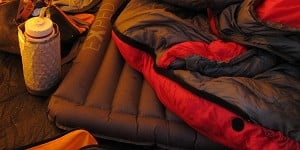

Comments